Position Prices on the Left or Top
Prices seem most expensive in the bottom-right.
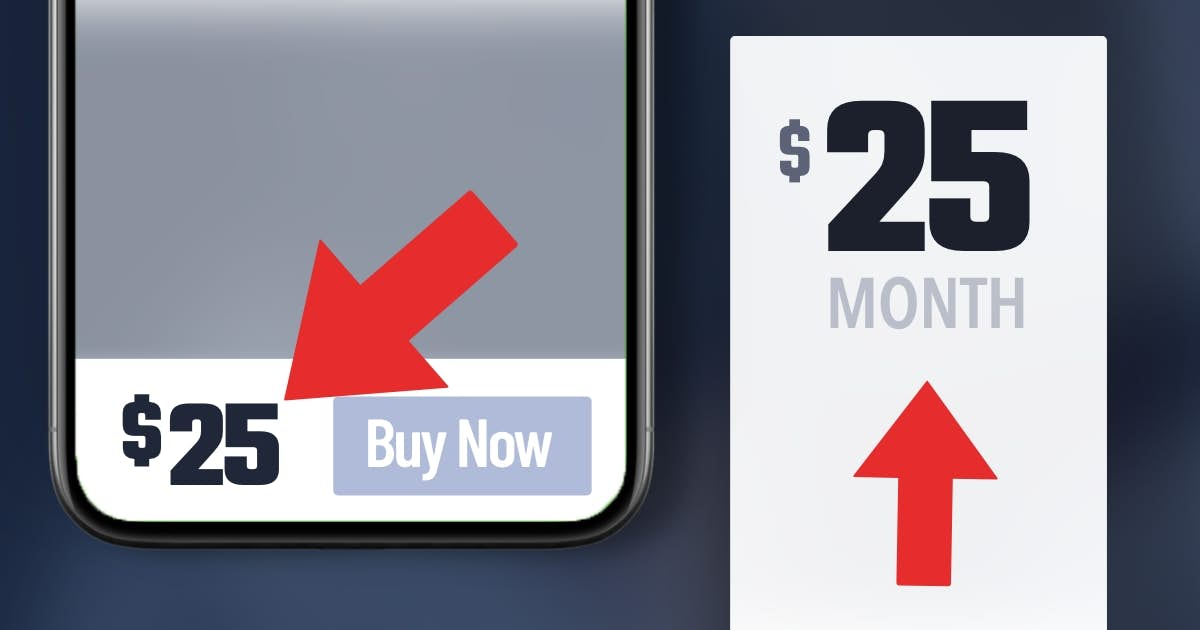
Overview
Prices feel small or large in different locations.
Typically, prices feel cheaper toward the left or top.
Left Positions Activate a Small Number Line
Every culture has a number line. If you read from left to right, you conceptualize small numbers on the left:
...people typically see small numbers to the left of larger ones, [so] they are likely to associate small numerical values with locations on the left (Cai, Shen, & Hui, 2012, p. 723)
Right Positions Trigger the Pain of Paying
On mobile devices, users need to cross over prices toward the right.

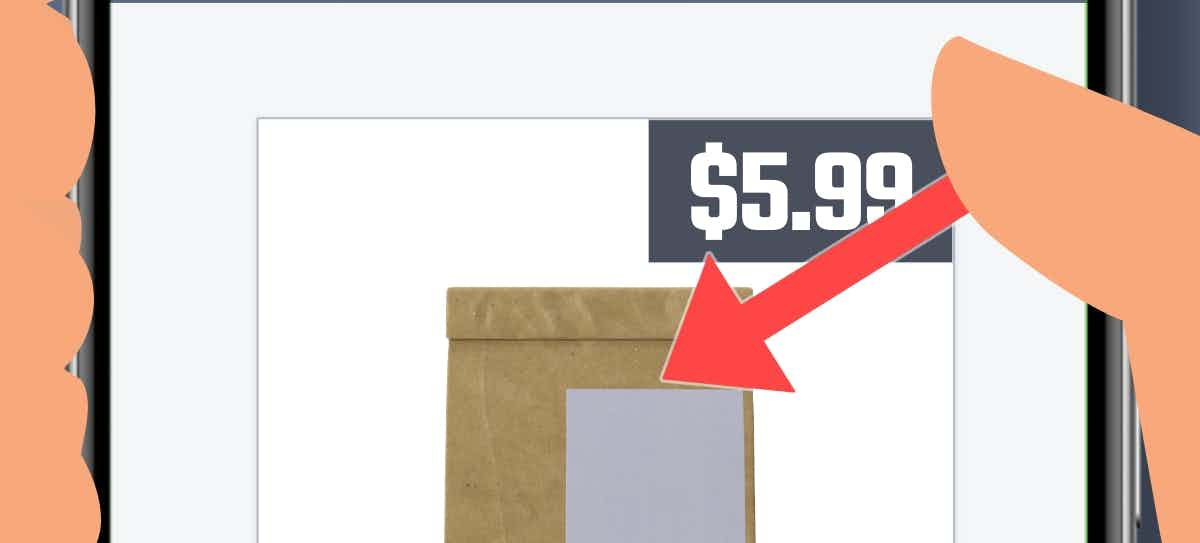
These thumb paths orient their attention toward prices, discouraging them from buying.
Right Positions Look Heavy
Objects on the right pull downward:
...because our eyes enter a visual field from the left, the left naturally becomes the anchor point or ‘visual fulcrum.’ Thus, the further an object is placed away from the left side (or the fulcrum), the heavier the perceived weight (Deng & Kahn, 2009, p. 9).
Prices might feel heavy toward the right:
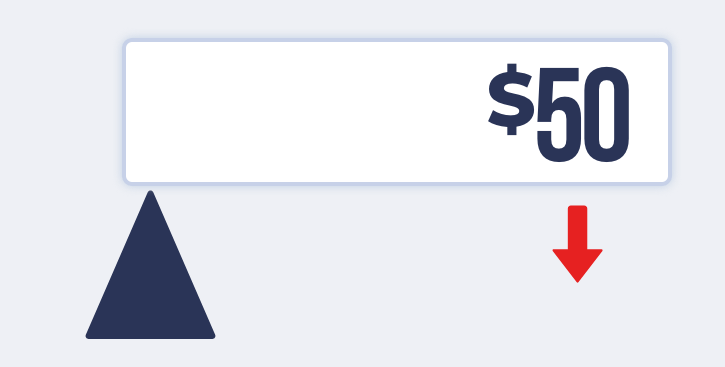
Prices Look Lighter Toward the Top
Food seems lighter toward the top of a package (Deng & Kahn, 2009).
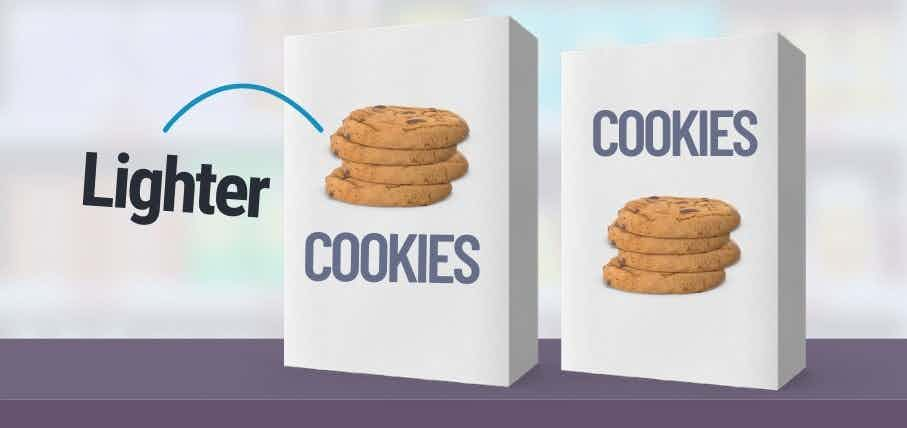
This food seems lifted to this location — so naturally it must be lighter.
Prices might inherit this effect.
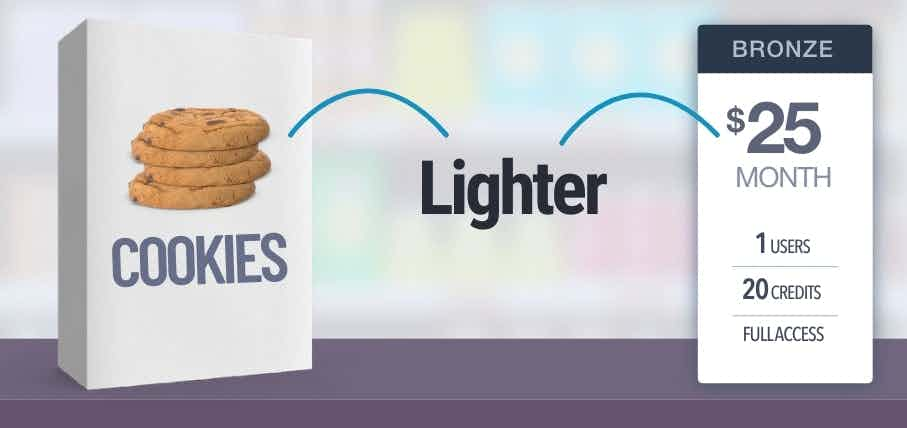
One study confirmed that prices seem expensive in the bottom-right (Park & Ma, 2019; though see Barone, Coulter, & Li, 2020 for a competing result).
- Barone, M. J., Coulter, K. S., & Li, X. (2020). The Upside of Down: Presenting a Price in a Low or High Location Influences How Consumers Evaluate It. Journal of Retailing, 96(3), 397-410.
- Cai, F., Shen, H., & Hui, M. K. (2012). The effect of location on Price estimation: understanding number–location and number–order associations. Journal of Marketing Research, 49(5), 718-724.
- Casasanto, D. (2009). Embodiment of abstract concepts: good and bad in right-and left- handers. Journal of Experimental Psychology: General, 138(3), 351.
- Coulter, K. S. (2002). The influence of print advertisement organization on odd-ending price image effects. Journal of Product & Brand Management.
- Deng, X., & Kahn, B. E. (2009). Is your product on the right side? The “location effect” on perceived product heaviness and package evaluation. Journal of Marketing Research, 46(6), 725-738.
- Park, J., & Ma, Y. J. (2019). Number-location bias: do consumers correctly process the number on the product package?. Journal of Product & Brand Management.
